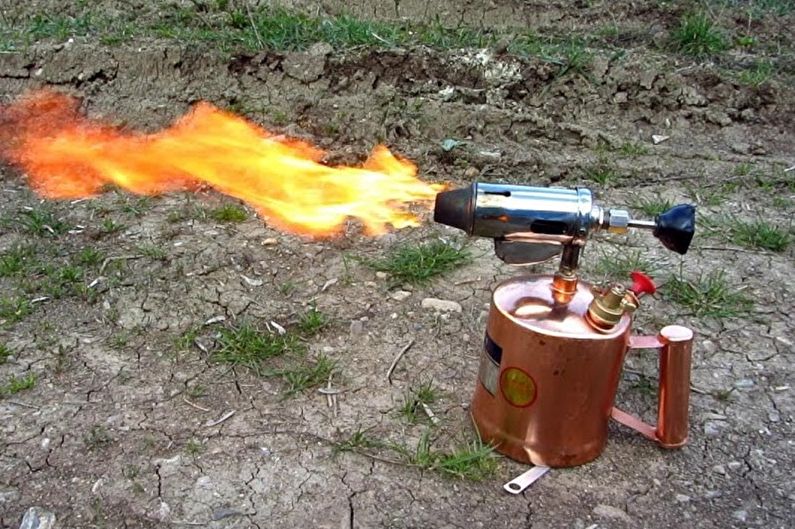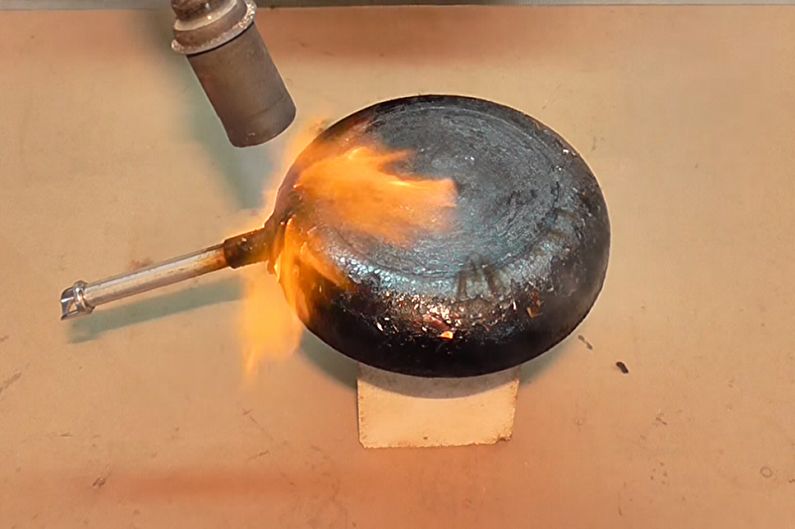
Despite the fact that every year more and more universal, multifunctional household appliances appear in kitchens, a frying pan remains an indispensable component of kitchen utensils. Many processes of cooking dishes without it are simply inconceivable, therefore it is very important to properly care for the dishes so that it lasts as long as possible. At the same time, it is important to take into account the material of the product - tougher measures can be applied to cast iron and aluminum pans, but Teflon and ceramic will require delicate care. In our article we will talk about how you can effectively get rid of various contaminants, soot and rust on different types of pans.
Carbon Prevention
The best way to keep the pan clean, no matter what material it is made of, is to wash it regularly after each cooking under hot running water using a sponge, brush or rag. But, to be honest, it’s not always even time for such a simple procedure. As a result, after some time, we sadly look at a pan overgrown with soot or suffer from constant burning of food.
To save your favorite pan from such a sad fate, it is enough to at least occasionally carry out simple preventive procedures. For example, calcine the pan in the oven. To do this, sprinkle the bottom with plenty of salt and put the dishes in the oven, wait until the salt acquires a sandy brown hue. Next, you need to wait a bit until the salt has cooled, and with it, clean the bottom surface.
The last stage is to grease the pan with vegetable oil and again put it in the oven for a short while. You get a real non-stick coating, which eliminates the possibility of burning food. In the prevention of the formation of a layer of soot inside the pan, you can use ordinary baking soda: sprinkle the bottom with it, add water and put the dishes on the fire. The mixture should be allowed to boil a little, and then the soda solution is drained and the dishes rinsed.
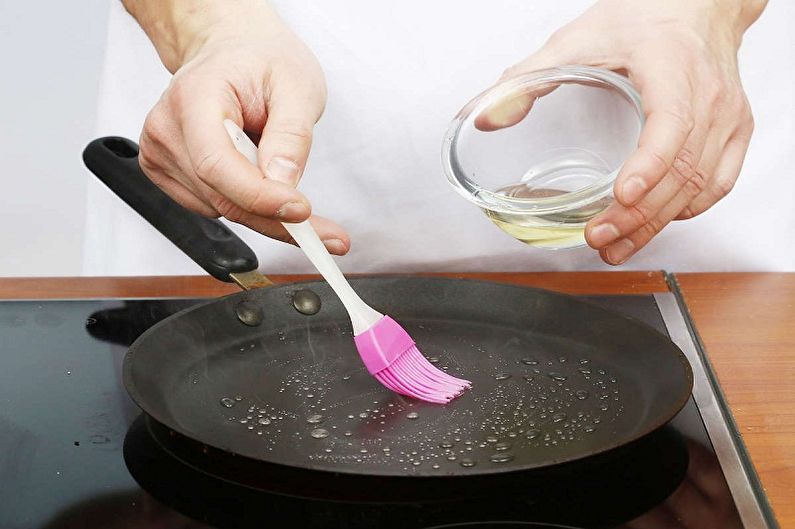
How to clean a teflon pan from soot
A feature of modern Teflon pans, which have recently been quite popular, is the non-stick coating, so many people get the impression that they are not afraid of soot. In fact, if you do not take proper care of the dishes, it may well appear both outside and inside. To eliminate it, we recommend using one of the following methods.
Method 1 - Citric Acid
The best way to remove the oily layer is citric acid. You need to pour water in a skillet and pour one packet of acid, put on fire and bring to a boil. When the solution begins to boil - turn it off and leave to cool. During this time, the acid will do its cleaning work, it remains only to rinse the dishes thoroughly.
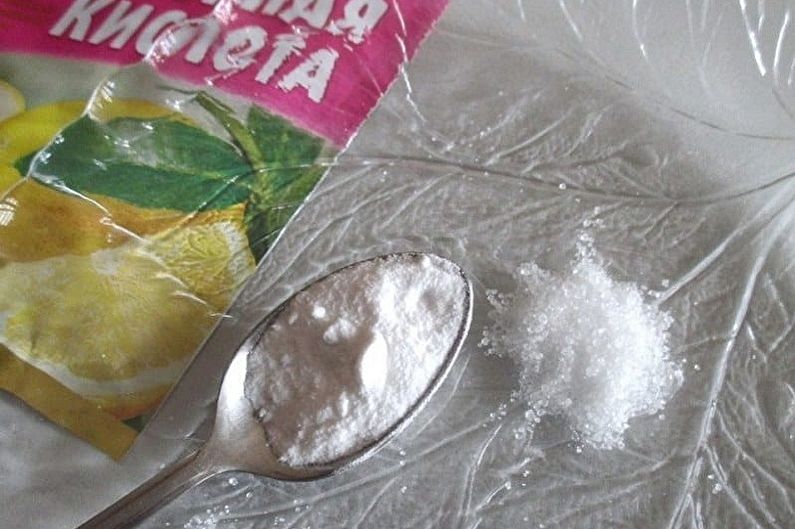
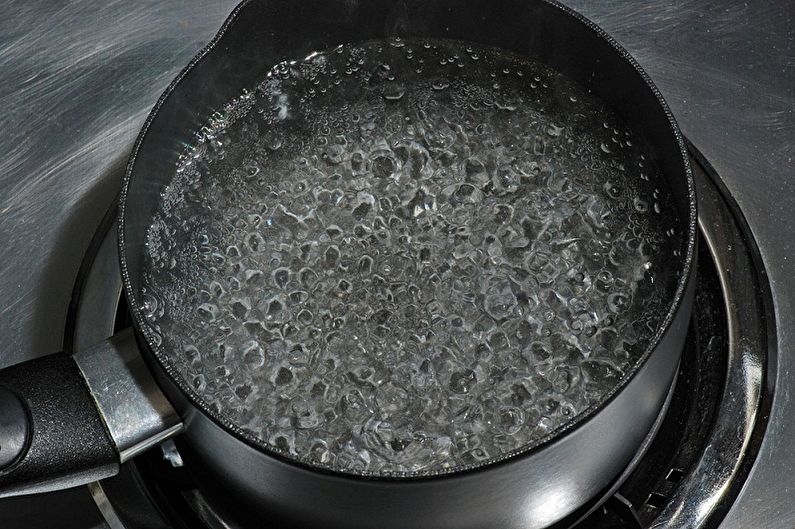
Method 2 - Soda
Gently clean the non-stick surface with soda. This method is similar to the previous one: pour water into a pan, add soda (3-5 tablespoons), bring to a boil. Then we also wait for the water to cool completely and rinse.
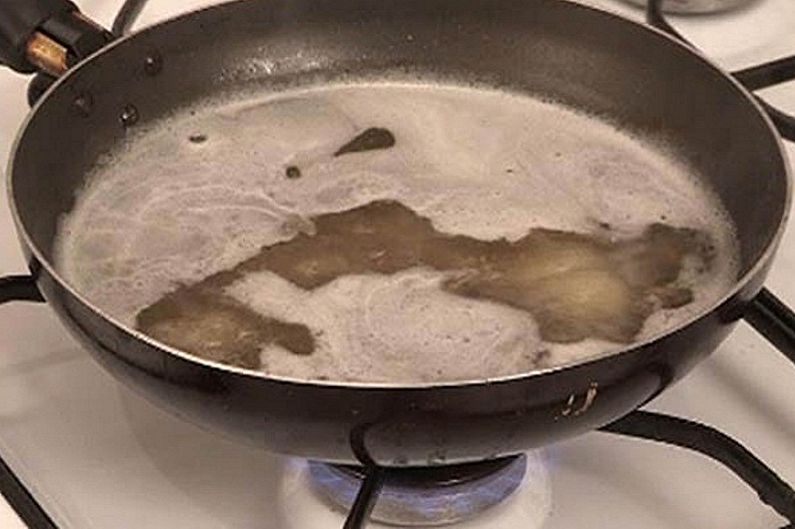
Method 3 - Apple
A rather unusual way involves cleaning dishes with an apple (you need one large or a couple of medium ones). The fruit must be peeled and finely chopped pulp to form juice. We apply the gruel to the bottom of the pan, evenly distribute and leave for 15–20 minutes. Then with a soft sponge we remove the apple mass and rinse the already clean pan.
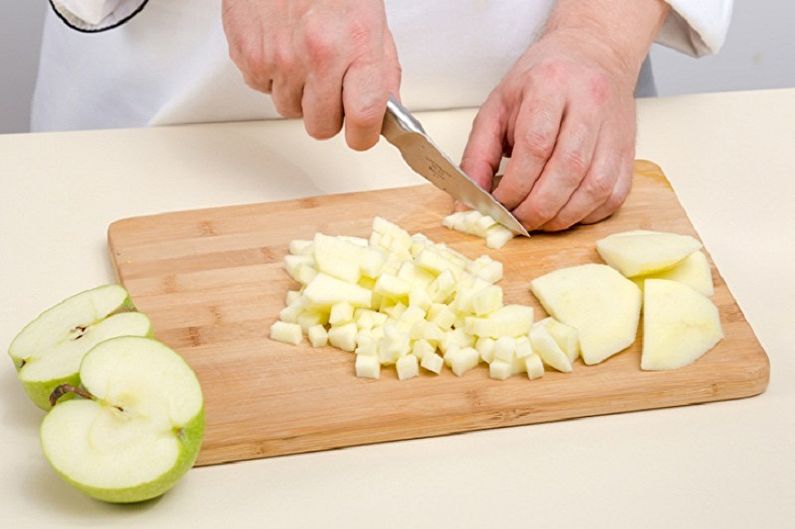
We clean the ceramic pan from soot
Ceramic pans are recognized as one of the most convenient due to their light weight and coating. The food in them burns quite rarely, but nevertheless troubles do happen, and you need to get rid of them with quite delicate methods. The coating negatively reacts to the use of aggressive chemicals, therefore, in their choice it is necessary to be scrupulous.
Method 1 - Water and Citric Acid
If food burns in a ceramic frying pan, which happens very rarely, you should not try to remove it with a spatula or other device - this way you can cause irreparable damage to the surface. The pan just needs to be filled with water and left on low heat for 15 minutes. As a rule, after such a procedure, any dirt and burnout can easily be removed with a soft sponge. If this does not help, you can add citric acid, but in no case should you use soda.

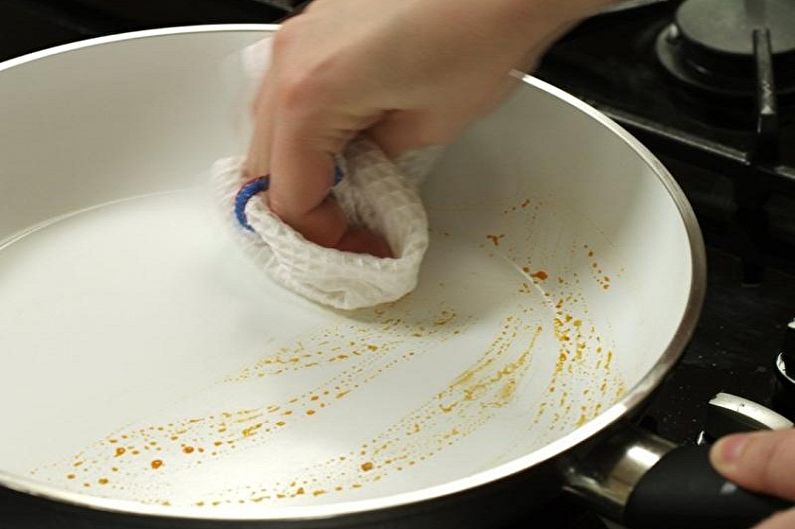
Method 2 - Alcohol
A good helper in cleaning a ceramic pan can be alcohol, which easily removes unsightly dark spots. You need to take a soft sponge or cotton pad, moisten with alcohol and rub the contaminated surface of the pan. If you were unable to get rid of them instantly, attach the alcoholized cloth to the stain and wait 5-10 minutes - it will surely disappear.


How to clean a pig-iron pan from soot
Although cast-iron kitchen utensils are gradually giving way to more modern materials, similar pans are still found in the arsenal of many housewives - some got them from grandmothers, and some still buy them, paying tribute to the durability of the material. Whatever it was, but the question of cleaning a cast-iron pan does not lose its relevance, so we have collected some practical advice that will help in this difficult task.
Method 1 - Powder and Soda
This method involves the complete cleaning of the cast iron skillet from the outside and the inside using the most affordable means. To begin with, you need to find a sufficiently deep and wide container (bucket, pan) where the pan will fit. We collect water into it, put on fire, fall asleep washing powder (5 tbsp. Tablespoons) and baking soda (1/2 cup), mix. The powder can be replaced with grated half a piece of laundry soap. To the resulting solution we add stationery glue and put the pan. After boiling, the dishes should simmer on low heat for about two hours. In the process, soot will gradually lag behind. After the specified time, the pan must be removed from the container and cleaned with a wire brush.
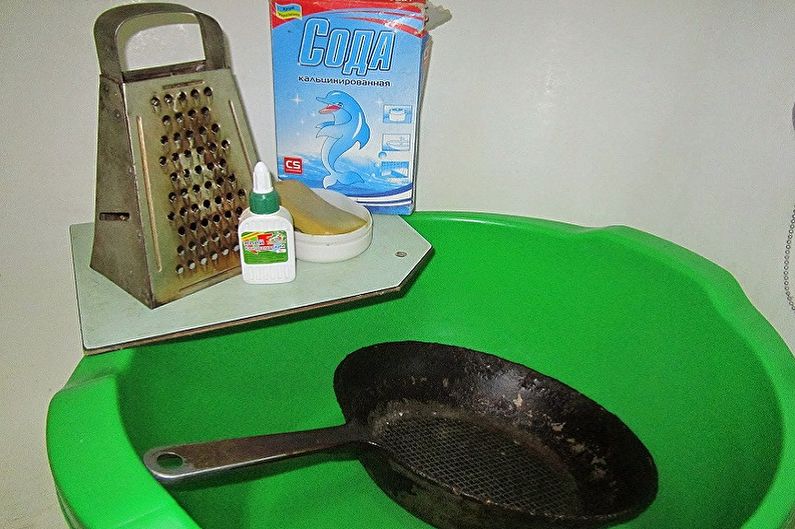

Method 2 - Laundry soap
If you are concerned about carbon deposits inside the pan - it is easy to get rid of it with the help of ordinary laundry soap. It is necessary to grind half a bar of soap on a grater and pour the resulting crumb to the bottom of the pan. Fill everything with water and put on fire. After boiling, the frying pan should stand on medium heat for about forty minutes, after which it is removed from the heat and allowed to cool. The mixture needs to be drained and the pan washed with an ordinary detergent.
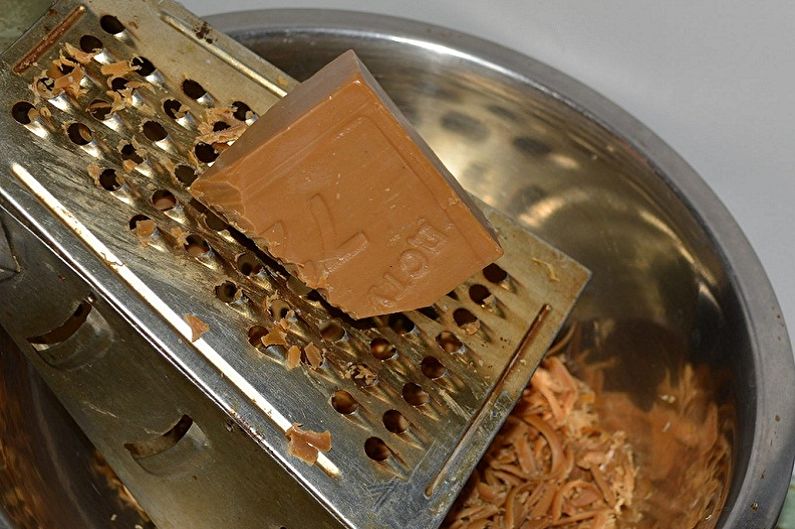
Method 3 - Calcination on fire
For those who live in the private sector or have a summer cottage, we suggest using the most primitive, but quite effective way to clean the cast iron skillet from fat - by burning on fire. In this case, the most difficult moment will be to build a fire and maintain its burning for a long time, so you need to stock up on firewood in advance. Then everything is simple - you need to install a frying pan in a fire and wait until the soot begins to fall away. It is important to ensure that the handle material does not melt and does not ignite.
In apartment conditions, such a procedure can theoretically be replaced by calcination under the influence of high temperature in the oven, but you will need to take care of good ventilation - after all, greasy soot will melt and smoke.Therefore, it is better to give preference to more gentle methods discussed above.

We clean from a deposit an aluminum frying pan
Aluminum pans have a long service life, they are lightweight and ideal for quickly heating food. However, during the cooking process, food burns quite often, so care for the pan should be systematic.
Method 1 - Salt and Vinegar
The inside of the aluminum pan can be cleaned using the most common salt and vinegar. You need to take a small container and mix both components in it until a paste forms. We apply the resulting composition to the surface and clean it with a hard sponge or brush. The soot and rust are thus cleaned off quite quickly, and the pan looks like new.
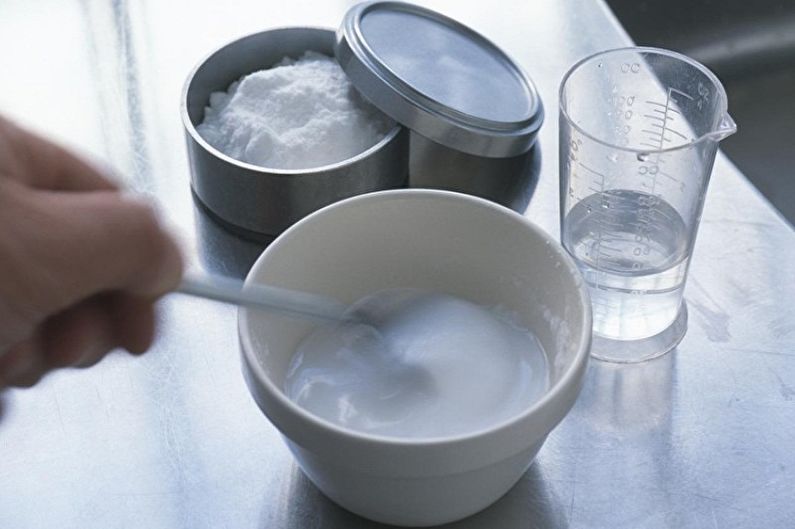

Method 2 - Boiling
As with the cast-iron surface, boiling the dishes in a bucket will come to the rescue here. We fill a large container (10-liter bucket) with water and pour the following components there: a pound of soda, a rubbed bar of laundry soap, a few bottles of silicate glue. We put all this mass on the fire and lay the pan. As a rule, carbon deposits begin to lag after 30–40 minutes, however, for reliability, you can hold them longer. After such a bath, the dishes should be thoroughly washed with a brush under running water.

Method 3 - Blowtorch
This method involves engaging in a comprehensive cleaning of a blowtorch pan and male power. Everything is quite simple - the flame of the lamp must be sent to the vessel and held for some time. As a rule, 5-7 minutes are enough to eliminate a raid, but the time will depend on the degree of contamination. It is worth considering that such an event can not be carried out in a closed room and near flammable objects.
In conclusion, I would like to note that for any pan, regardless of what material it is made of, you can choose a special detergent. With the help of various solutions and pastes, it is easy to maintain the dishes in good condition so as not to overshadow their free time after cleaning the kitchen utensils.
